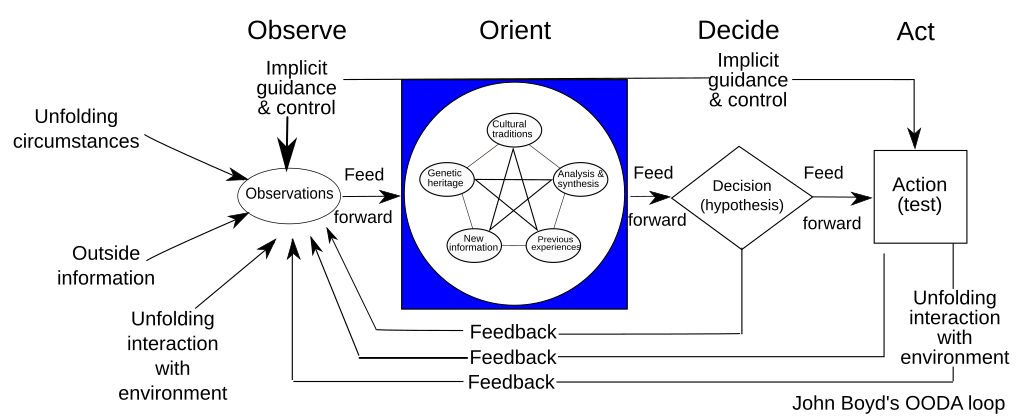Introduction
As we move into 2023, the focus for businesses should shift from high-level data strategies and low-level tech infrastructures to creating and operating analytics products that allow businesses to respond and win in a rapidly changing market. This blog post explores how organizations can achieve this agility using data products aligned with the OODA (Observe, Orient, Decide, Act) loop—a decision-making model developed by military strategist John Boyd.

Implementing the OODA Loop with Data Products
Over the past few months, I have been developing a new solution to help companies implement the OODA loop with genuine business-aligned data products. Instead of making predictions, I want to highlight what businesses need to focus on in 2023 to stay competitive.
The Shift from Strategy to Execution
In 2022, organizations focused on:
- High-level data strategy.
- Low-level tech infrastructure (e.g., Data Mesh, Data Fabric, MDS, Data modeling).
In 2023, the focus needs to shift towards quickly building and operating analytics products that help businesses react to market changes. Embedding business-oriented data and analytics capabilities into everyday operations is crucial. Big bang, one-off strategies are no longer sufficient.
The Importance of Agility
To cope with a rapidly changing market, businesses need genuine data products that provide direct business value. These products must be quickly defined, prototyped, and experimented with—no long waits for data infrastructure onboarding. This iterative process involves:
a) Verifying if the business hypothesis is correct.
b) Assessing feasibility.
c) Quickly productionizing, changing, and retiring products as needed.
Real-World Challenges
As a data and analytics professional, ask yourself: If you received a request to build a new D&A product (dashboard, model, etc.) for a business or external customer, how long would it take if you didn’t already have the data in your platform? And even if you did, how long would it take to create and change it from raw transactional data?
If your answer is weeks to months, then your process needs a serious overhaul.
Accelerating the Last Mile
Technologies like ChatGPT and the current range of GPT/AI-infused tech solutions can accelerate the final stages of analytics—once the data is prepared for consumption. However, the first mile (discovery, ETL, modeling, normalization, semantic modeling) remains a bottleneck. The key challenge for 2023 is ensuring that this process can rapidly adapt to new and different use cases.
Key Focus Areas for 2023
Empowering Analytics Users
One major challenge is enabling analytics users—whether they are business-oriented or data science-oriented—to spend more time on actual analytics and model development, rather than on laborious tasks like data wrangling. Here’s how:
- Controlled Experimentation: Foster a culture of controlled experimentation, allowing for quick testing and pivoting using the OODA loop.
- User-Friendly UX and Tooling: Develop robust, user-friendly interfaces and data product-based tooling to speed up innovation.
Simplifying Analytics Development
Given that 80% of analytics needs are relatively simple (e.g., linear metrics, simple regression, classification), good technology, processes, and foundations, coupled with a business-user-focused UX, can enable quick and iterative development with appropriate transparency and guardrails. For the more complex 20%, agility for data scientists and engineers is key.
Moving Beyond Data Wrangling
In 2023, the goal should be to minimize laborious tasks that take up over 60% of the time, such as data wrangling. AutoML can help but is only part of the solution. Just as the industrial revolution liberated people from grinding grain or generating electricity, today’s analytics developers should focus on assembling simple analytics building blocks rather than fabricating everything from scratch.
Conclusion
To thrive in 2023, organizations must integrate business-oriented data and analytics capabilities into their daily operations, enabling rapid response to market changes. This involves creating and iterating on genuine data products that provide direct business value and support the OODA loop decision-making process. By fostering a culture of controlled experimentation and developing user-friendly tools, businesses can significantly enhance their agility and competitiveness.
Call to Action
Is your organization ready to embrace this new approach to data and analytics? Let’s work together to transform your analytics capabilities and create a data-driven culture that drives value and fosters continuous improvement. Contact us today to learn more about how we can help you achieve these goals.

